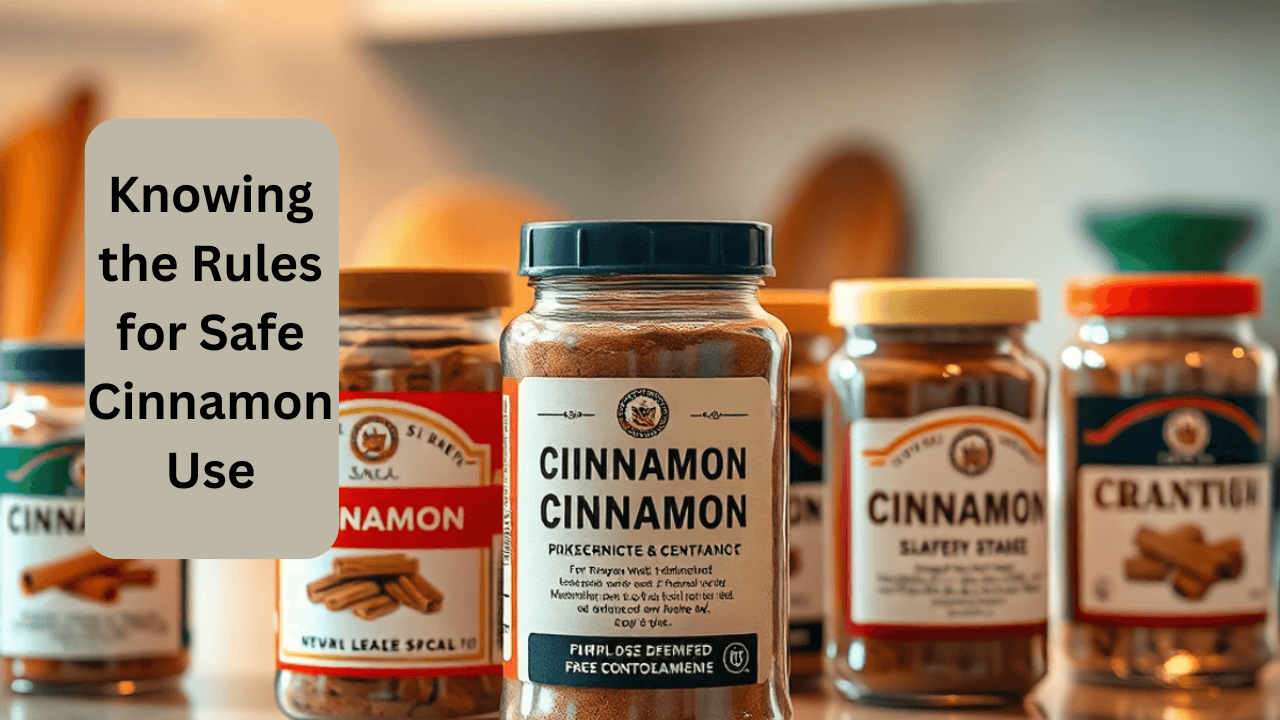Introduction:
Recent studies have rocked the spice business with startlingly high lead concentrations found in certain cinnamon brands. One-third of the cinnamon samples tested had high lead levels, according to consumer reports; some brands exceeded safety limits. Safety warnings issued by the FDA for particular ground cinnamon products offered at cheap stores encourage consumers to throw out tainted goods.
This disclosure begs important issues regarding the safety of a spice that many homes now have as a staple. You might be wondering whether you should completely shun this beloved spice or clear your cabinet of cinnamon goods.
The good news is not all cinnamon brands cause problems. Many respectable companies have very strict quality control policies in place to ensure that their products meet safety requirements. Your ability to enjoy the warm, aromatic taste of cinnamon and any health benefits that may be derived are subject to good brand selection.

Let’s discuss the impact of these findings for your kitchen and how to safely continue using cinnamon in everyday life.
Recognising Lead Contamination
Lead contamination results from this deadly heavy metal invading compounds from several sources, including:
- Economic procedures
- contaminated ground
- Production tools
- Negative farming methods
- Contamination across processing
Lead cannot be absorbed by your body, which puts you at risk as over time this poisonous metal builds up in your organs and tissues. This process, sometimes referred to as bioaccumulation, implies that minute, recurring exposures can accumulate to dangerous amounts.
Lead exposure has health consequences including:

Damage to the brain and nervous system
Lower cognitive ability and IQ
kidney issues
Great blood pressure
Problems relating to reproduction
Children with developmental delays
Studies point to no “safe” threshold of lead exposure that exists. Perhaps influencing embryonic development, the metal can pass the placental barrier as well as the blood-brain barrier. Store mostly in bones and teeth, lead particles can linger in your body for decades and gradually release themselves into your bloodstream.
Recent Results on Cinnamon Brands
Unbelievably high degrees of lead contamination in well-known cinnamon brands have been exposed by a Consumer Reports investigation. Thirty-three ground cinnamon products were evaluated; one-third of the samples had lead levels over the recommended safety limits.
Supreme Custom
These results spurred the FDA to look at cinnamon-flavored goods, which turned up severe lead contamination in some applesauce pouches. Lab tests found shockingly high lead levels in these products ranging from 2,270 to 5,110 ppm.
The research has raised general questions regarding the safety of cinnamon products available in American markets. While some producers have started voluntary recalls, others are under investigation as testing across several product lines and brands keeps on.
Knowing the Rules for Safe Cinnamon Use
Present Policies and Their Limitations
The rules controlling spice safety in the United States contain certain major flaws in terms of consumer protection. The Food and Drug Administration (FDA) depends on manufacturers’ voluntary assistance to remove dangerous items from stores; it cannot force a recall of hazardous spices.
One major area of concern is that rules for allowable lead levels on cinnamon and other spices lack federal guidelines. This kind of inequality in rules tends to pose challenges in the areas of:

Quality control – Manufacturers are not required by law to have standardized testing.
Enforcement: Companies supplying contaminated products don’t stand a chance of retribution.
Consumer Protection: Less open is the information on product safety.
The Growing Demand for More Strict Rules
Stiffer rules are being pushed for as more data on tainted spice goods on the market surfaces. Professionals in the sector predict major modifications to control spice safety rules in the next years.
Juggling safety issues with health benefits: Is cinnamon still worth it?
When obtained responsibly, cinnamon packs strong health advantages that make it a great addition to your diet. Studies reveal this old spice has major benefits:
Important Health Benefits:
Diabetes management’s blood sugar control
Strong antioxidant qualities
Naturally occurring anti-inflammatory actions
Risk of heart disease lowering
Possible neuroprotective properties
Cinnamon’s unique taste and medicinal actions come from the active chemical cinnamaldehyde. Research has shown that daily intake lowers blood sugar by up to 29% and lowers insulin resistance.
Risk vs. Benefit Analysis
Safe consumption of cinnamon requires a balanced approach:
Dose Reduction: Reduce to one to two tsp. per day
Source Choice: Select registered brands with open testing practices.
Type Matters: Lower coumarin levels in Ceylon cinnamon than in Cassia variations

When you choose well-tested items from reliable suppliers, cinnamon’s health benefits are still noteworthy. Studies indicate that the anti-inflammatory and blood sugar control advantages above any possible hazards; so, make sure your cinnamon comes from companies under strict safety standards.
If you give quality and safety a top priority in your purchase decisions, your daily cinnamon intake can still fit a good diet. The secret is choosing companies that show dedication to safety through consistent testing and open result reporting.
The manufacturer can be contacted directly to inquire about their policy on heavy metal testing. Most respectable companies maintain records of good manufacturing practices and will provide that information upon request.
Conclusion:
The cinnamon industry has to make a big decision. Lead contamination recently demands proper modification in quality control and safety measures. As a consumer, your choices are of huge influence since every buying decision explicitly communicates to the manufacturers the requirement of product safety.
FAQs:
1. What are the health risks associated with lead contamination in cinnamon?
A. Lead contamination can lead to a range of health issues, particularly with prolonged exposure. It can bioaccumulate in the body, leading to potential neurological and developmental problems, especially in children. Organizations like WHO have reported various health issues related to lead exposure.
2. Which cinnamon brands have been found to contain high levels of lead?
A. Recent findings from Consumer Reports identified specific brands such as Paras, EGN, and Mimi’s Products that exceeded safety limits for lead concentration. These alarming results prompted further investigation into the issue of lead contamination in cinnamon.